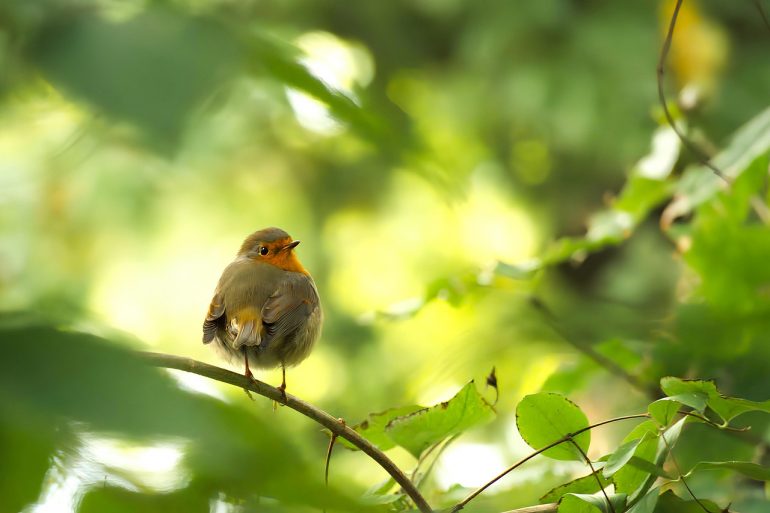Creating a wildlife-friendly garden is a year-round commitment that rewards both nature and the gardener. Each season offers a new opportunity to support biodiversity through thoughtful planting, sustainable practices, and attention to the changing needs of birds, insects, and mammals. With green spaces under increasing pressure, gardens can provide essential habitats, no matter the size or setting. From spring preparation to winter care, embracing a seasonal approach ensures your garden becomes a sanctuary for wildlife in every month of the year.
Year-Round Gardening for Biodiversity
British gardens play a vital role in supporting declining wildlife populations, especially as natural habitats like meadows and wetlands disappear. When planned carefully, gardens can offer food, shelter, and safe passage for a variety of species. Incorporating features such as hedgehog highways, leaving sections of grass to grow wild, and planting native flowers are all effective ways to create a welcoming space for nature.
Choosing sustainable gardening products is equally important. Switching to peat-free compost and materials helps protect fragile ecosystems like UK peatlands, which support unique habitats and store carbon. Making this change at every stage of the gardening cycle strengthens local ecosystems.
Peat-free products supplied by AHS Ltd – Landscaping Materials Supplier are especially effective in supporting biodiversity. Their range of eco-conscious landscaping materials helps gardeners protect the environment while providing fertile ground for native plants and wildlife alike.
By managing gardens in tune with the seasons and using nature-friendly methods, private spaces can become thriving mini-ecosystems that support birds, bees, hedgehogs, amphibians, and invertebrates.
Spring Gardening with Peat-Free Materials
Spring is a critical time to prepare your garden for the active seasons ahead. Starting with soil improvement, using peat-free compost made from green waste, wood fibre, or coconut coir creates a healthy foundation. These alternatives maintain moisture and deliver slow-releasing nutrients, supporting early blooms such as bluebells, primroses, and wild garlic.
Early-flowering plants are crucial for pollinators emerging from winter. Using peat-free soil enrichers helps these flowers flourish and supply nectar and pollen when it is most needed. In addition, planting hedgerows with native shrubs like hawthorn and blackthorn using peat-free media builds essential wildlife corridors across the garden.
Shelter structures such as bird boxes and insect hotels should be built from natural materials like pine cones, hollow stems, and untreated wood. These additions offer protection and breeding spots for various species. Locating them near native plants ensures access to food and safety.
Summer Wildlife Garden Care
During the summer months, wildlife activity peaks. Dry spells make water conservation a priority, and peat-free conditioners help retain soil moisture. Products with bark or coir components reduce the need for frequent watering, which benefits both plants and local wildlife.
To support pollinators through the summer, planting drought-tolerant species like lavender, thyme, and oregano in grit-enriched, peat-free compost ensures a steady supply of nectar. These plants thrive in warm conditions and continue to provide food during heatwaves.
Instead of relying on chemical pesticides, natural methods such as companion planting can manage pests. This approach encourages predatory insects that keep pest populations under control without disrupting the garden ecosystem.
Setting up rainwater collection systems, such as water butts, ensures wildlife has access to clean drinking water. Adding shallow dishes filled with pebbles offers safe watering spots for birds and insects alike.
Creating Microhabitats
Even small gardens can host a wide range of species by creating specific microhabitats. Building a mini-pond using recycled materials and an eco-friendly liner introduces a water source vital for frogs, newts, and aquatic insects. Adding native marginal plants in peat-free containers enhances the habitat and encourages breeding.
Log piles and stone features also serve important roles, offering shelter and basking spots for reptiles and amphibians. When placed in sunny areas surrounded by natural planting, these structures become valuable additions to any garden.
Transforming a patch of lawn into a wildflower meadow is another low-maintenance way to boost biodiversity. Sowing native seeds in low-nutrient, peat-free soil allows wildflowers to thrive and attract bees, butterflies, and other insects throughout the summer.
Garden borders edged with reclaimed wood or stone can double as wildlife corridors. These materials create hidden crevices and cool, shaded areas that benefit beetles, spiders, and other beneficial insects that contribute to soil health and pest control.
Autumn and Winter Wildlife Support
The cooler months offer a chance to support wildlife preparing for winter. Mulching borders and planting beds with composted bark or leaf mould helps protect plant roots and soil life while providing warm habitats for ground-dwelling creatures.
Bird feeding becomes especially important during autumn and winter when natural food sources are scarce. Use simple feeders made from untreated wood and position them near cover such as hedges or shrubs. Offering a mix of seeds and suet supports birds through harsh conditions.
Leaf fall is an opportunity to create safe hibernation spots. Rather than discarding leaves, gather them into wire-frame piles or designated corners of the garden. These make ideal hiding places for toads, hedgehogs, and insects.
Garden shelters such as log stacks and overturned pots filled with dry leaves provide frost-free spaces for overwintering. These features don’t require much space but offer significant value to cold-weather wildlife.
Monitoring and Improving Biodiversity
Simple surveying practices help evaluate your garden’s impact. Observing visiting birds and butterflies and noting seasonal changes provides valuable insight. This data can inform future plant choices and habitat improvements.
The presence of key species such as frogs, hedgehogs, or common birds indicates a healthy garden ecosystem. Their absence can guide decisions about adding more shelter, food sources, or planting areas to fill gaps in the habitat.
Engaging with local conservation projects and citizen science initiatives is another way to boost your efforts. Many organisations offer support, including species identification tools, seasonal gardening advice, and workshops that connect like-minded gardeners.
Recording sightings via mobile apps or online tools can contribute to larger conservation databases. These records help shape a broader understanding of wildlife trends and encourage gardeners to try new techniques and share successful practices with others.
Making a Lasting Difference for Wildlife
Gardens have the power to support wildlife and restore small but vital parts of the natural world. Through consistent, thoughtful choices and the support of responsible suppliers, you enhance your garden and contribute to the broader conservation effort, right from your doorstep.





